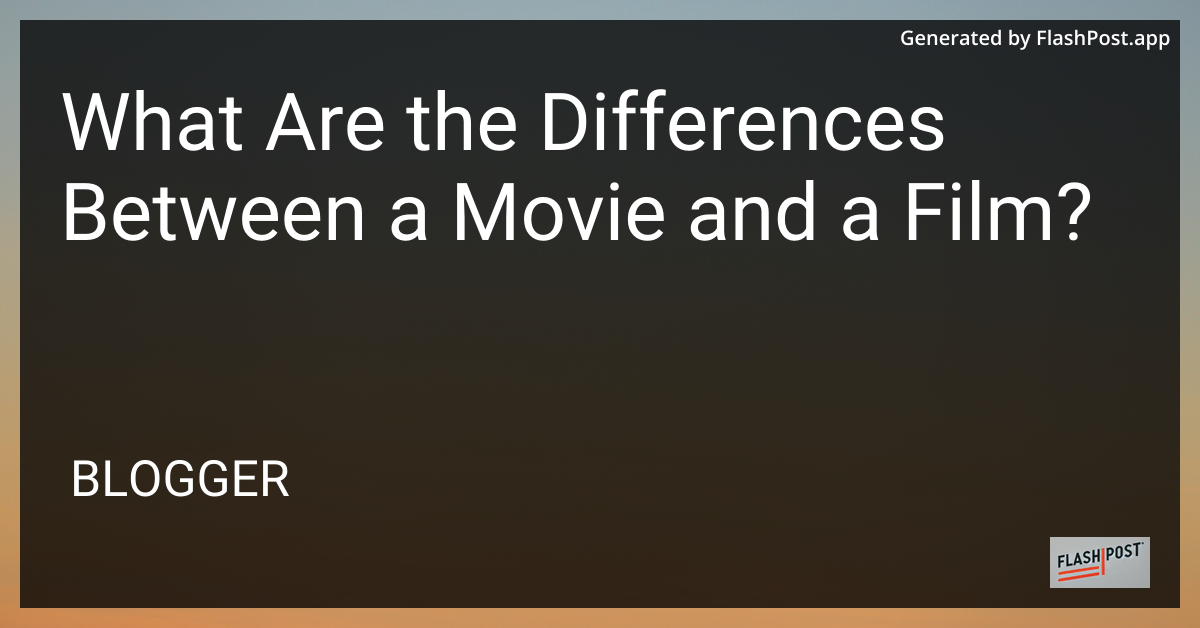What Are the Differences Between a Movie and a Film?

Differences Between a Movie and a Film
In the world of visual storytelling, the terms “movie” and “film” are often used interchangeably. However, there are nuanced differences between the two that are worth exploring. Understanding these differences can enrich your appreciation of the art and craft of cinema.
Definition of Terms
To begin, it’s important to define what we mean by “movie” and “film.”
Movie: Generally refers to commercialized entertainment. Movies are produced with mainstream audiences in mind, often focusing on big box office numbers. They are usually characterized by fast-paced storytelling, engaging plotlines, and are typically aimed at providing entertainment.
Film: The term “film” relates more to the artistic and academic aspects of visual storytelling. Films are often seen as more serious, adhering to artistic, aesthetic, or educational values. They may focus on storytelling, cinematography, and editing as forms of art.
Origins and Usage
The terminology itself hints at the primary differences. “Movie” arises from “motion picture,” denoting moving images primarily for entertainment. On the other hand, “film” comes from “photographic film,” focusing on the medium used to capture the images and the artistry behind it.
Artistic vs. Entertainment Values
One of the key distinctions lies in the priorities of each medium. Movies prioritize entertainment, often prioritizing factors like audience engagement, revenue, and global appeal. They aim to appeal to a wide range of audiences through high-stakes plots, engaging characters, and special effects.
Conversely, films may concentrate on more complex themes, character development, and visual aesthetics. They are often made to be thought-provoking, challenging the audience to engage on a deeper intellectual or emotional level.
Production and Distribution
Another difference can be found in the production and distribution models. Movies are generally backed by large studios with considerable budgets, ensuring wide releases in numerous theaters across multiple regions. These are the blockbusters that tend to dominate box office charts.
Films may arise from independent studios or small production companies, and might not see extensive theatrical release. Their distribution may occur through film festivals or niche platforms, catering to specific audiences who appreciate artistic storytelling.
Examples
When thinking about movies, titles like “Avengers” or “Jurassic World” typically come to mind—big-budget projects that excel in providing thrilling experiences to broad audiences. In contrast, films like “The Tree of Life” or “Moonlight” demonstrate deeper artistic expression, often exploring complex narratives and themes.
Conclusion
Understanding the differences between movies and films allows viewers to appreciate the breadth and depth of cinematic offerings. Both contribute uniquely to the world of visual storytelling, serving distinct purposes in satisfying audience desires for entertainment and thought-provoking content.
For more insights: - Check out the benefits of OLED Monitors for Movies - Discover ways to Watch Free Movies Online Legally - Learn how to enhance your viewing experience by Watching Movies in VR
Comments
Post a Comment